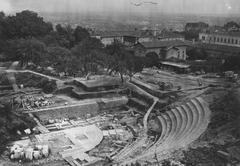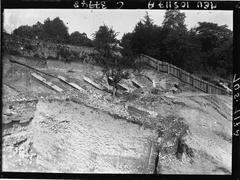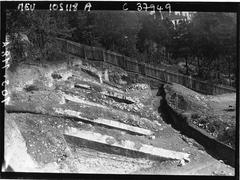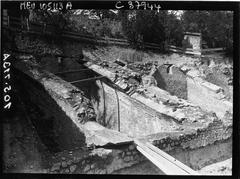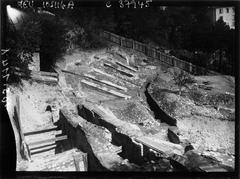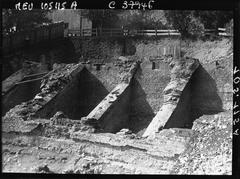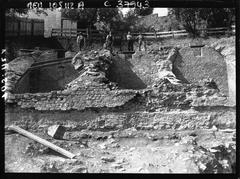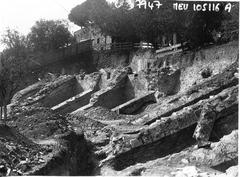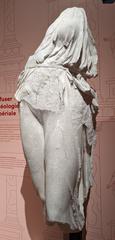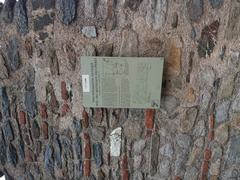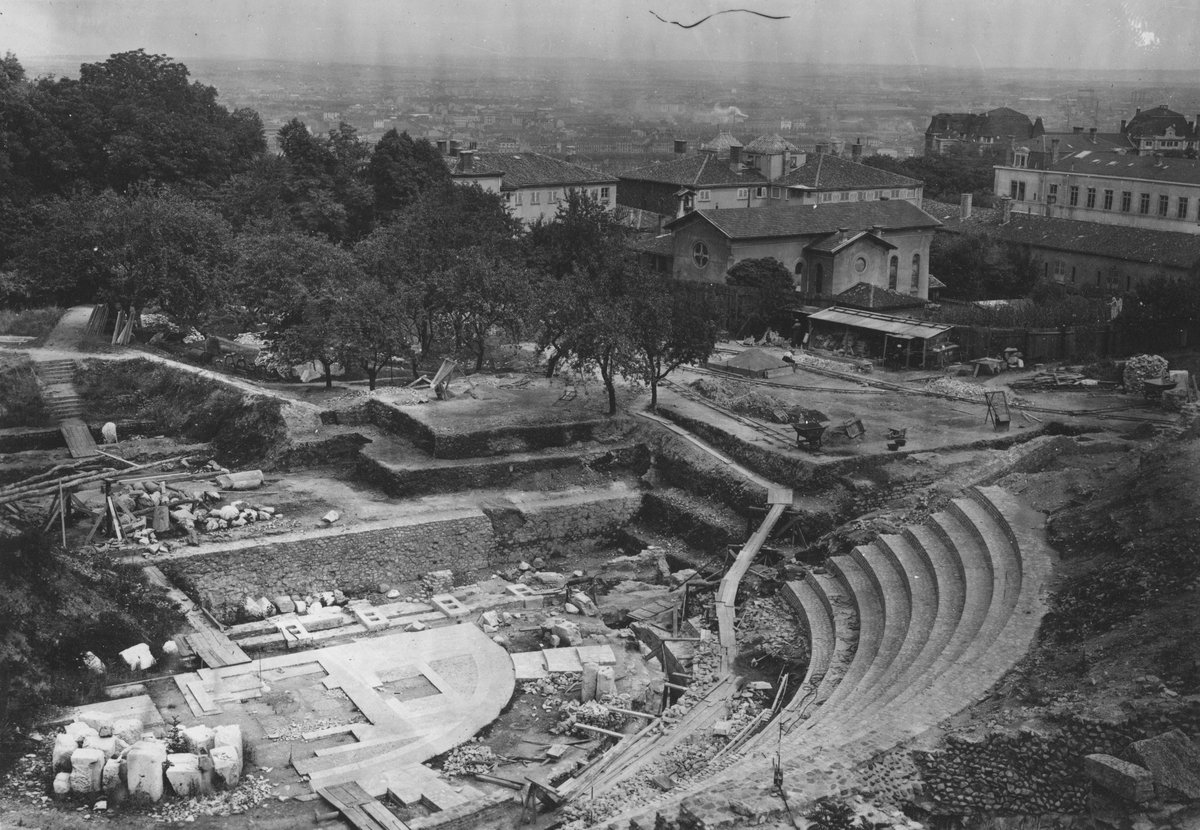
Ancient Theatre of Lyon: Visiting Hours, Tickets, and Historical Guide
Date: 14/06/2025
Introduction
Perched atop the picturesque Fourvière Hill, the Ancient Theatre of Lyon—also called the Grand Roman Theatre of Lyon or Théâtre antique de Fourvière—stands as a striking testament to Roman engineering and the vibrant urban life of Lugdunum, the Roman capital of Gaul. Built around 15 BCE under Emperor Augustus and later expanded by Emperor Hadrian, this site once welcomed up to 10,000 spectators, serving as the social and cultural heart of Roman Lyon. Modern visitors can explore the remarkably preserved cavea (seating area), orchestra, and substructures, as well as the adjacent Odeon, a smaller theatre for music and oratory. The hillside site delivers not only exceptional acoustics but also sweeping panoramic views over Lyon.
This detailed guide explores the Ancient Theatre’s history, architecture, and cultural significance, while offering practical information about visiting hours, ticketing, accessibility, travel tips, and nearby attractions. Whether you’re a history buff, an architecture enthusiast, or attending the famous Les Nuits de Fourvière festival, this resource ensures a memorable and informed experience. For further details, consult these authoritative resources: Fourvière Archaeological Park, Visiter Lyon, and Ancient Theatre Archive.
Table of Contents
- Introduction
- Historical Background: Construction and Roman Lugdunum
- Architectural Highlights: Grand Theatre and Odeon
- Social and Cultural Significance
- Decline, Rediscovery, and Restoration
- Visiting Information
- Practical Visitor Tips
- Nearby Attractions
- Frequently Asked Questions (FAQ)
- Conclusion
Historical Background: Construction and Roman Lugdunum
Origins and Construction
The Ancient Theatre of Lyon was initiated around 15 BCE under Emperor Augustus and expanded in the early 2nd century CE during Hadrian’s reign (Ancient Theatre Archive). Exploiting the natural slope of Fourvière Hill, the theatre’s cavea was carved into the hillside, originally 90 meters in diameter and later extended to 108 meters to accommodate the city’s growing population (Visitons Lyon). At its zenith, the theatre could seat between 9,100 and 11,400 spectators, making it one of the largest in Roman Gaul.
The Odeon and Associated Structures
Adjacent to the Grand Theatre is the Odeon, constructed in the 2nd century CE for musical performances and public readings. Seating around 3,000, the Odeon featured a rare roof for improved acoustics and boasted luxurious marble and porphyry floors, reflecting the wealth and sophistication of ancient Lugdunum (Offbeat France). Remnants of a nearby temple dedicated to Cybele further underscore the site’s religious significance.
Architectural Highlights: Grand Theatre and Odeon
Cavea (Seating Area)
The semi-circular cavea is divided into three main sections:
- Ima Cavea: 20 lower rows, reserved for the elite.
- Media Cavea: 10 middle rows.
- Summa Cavea: 12 upper rows, added during later expansion (Ancient Theatre Archive).
All sections were separated by stairways and balustrades, mirroring Roman social hierarchy. The east-northeast orientation maximizes natural light and views.
Orchestra and Stage
The orchestra, about 29 meters in diameter, was paved with fine marbles and granites, serving as the focal point for drama and ceremonies (Traveltolyon). The stage, originally adorned with columns and statues, provided ample space for varied performances. Substructures and passageways beneath the cavea ensured efficient crowd movement and drainage—testaments to Roman engineering skill.
The Odeon
The Odeon, smaller and more intimate, was used for musical contests, poetry readings, and possibly city council meetings. Its elaborate mosaic floors, vaulted galleries, and rare roofing highlight both artistic and technical prowess (French Moments).
Social and Cultural Significance
The Grand Theatre and Odeon formed the social epicenter of Roman Lugdunum. They hosted everything from dramatic performances and public speeches to religious ceremonies, reinforcing communal ties and imperial authority (Woolf, 2020). Theatres like these played a key role in Romanizing Gaul, fostering a shared cultural identity among its inhabitants.
Decline, Rediscovery, and Restoration
Following the 3rd-century decline of the Roman Empire, the theatres fell into disuse and were gradually buried by landslides and urban development. Rediscovered in the 19th and 20th centuries, systematic excavations led by Edouard Herriot and subsequent restoration projects have preserved the site for public appreciation (historytools.org). Recent archaeological work continues to reveal new aspects of Roman construction and life (Berger, 2023; Foucault, 2022).
Today, the Ancient Theatre is an integral part of Lyon’s UNESCO World Heritage historic center (en.visiterlyon.com).
Visiting Information
Hours and Ticketing
- Theatre Grounds: Open daily from 7:00 to 19:00. Free entry to the outdoor site (The Egyptian Traveler).
- Lugdunum Museum: Open Tuesday to Friday 11:00–18:00, weekends 10:00–18:00; closed Mondays. Entry €4 (free on the first Sunday of each month) (Lugdunum Museum).
- Guided Tours: Available via the Lyon Tourist Office—daily, in French and English (Visiter Lyon). Audio guides can be rented or downloaded.
Accessibility
The site is partially accessible: some ramps and paved paths are available, but ancient steps and uneven surfaces present challenges. Contact the visitor center for the latest accessibility information and to arrange assistance (Visiter Lyon).
Guided Tours and Special Events
Daily guided tours provide in-depth historical context. The annual Les Nuits de Fourvière festival (June–July) transforms the theatre into a vibrant cultural venue, attracting over 100,000 visitors with music, theatre, dance, and circus performances (maryannesfrance.com).
Practical Visitor Tips
Getting There
- Address: Rue Roger Radisson, 69005 Lyon (Trip.com)
- Public Transport: Take the funicular from Vieux Lyon metro station to Fourvière for a direct and scenic ascent. Metro line D and buses also serve the area, but parking is limited (Woke Waves).
Best Times to Visit
- Early morning or late afternoon: Quieter and offers the best light for photography.
- September–October: Mild weather and fewer crowds.
- June–July: For festival events—book tickets in advance.
Facilities and Accessibility
- Restrooms: Near the museum entrance.
- Café: Small café at the museum; picnic areas on theatre grounds.
- Gift Shop: In the museum, offering books and souvenirs.
- Shaded Areas: Limited; sun protection is advised in summer.
Nearby Attractions
Enhance your visit by exploring:
- Lugdunum Museum: Roman artifacts and interactive exhibits (Lugdunum Museum).
- Basilica of Notre-Dame de Fourvière: Iconic hilltop church with panoramic city views.
- Jardins du Rosaire: Terraced gardens ideal for relaxing strolls.
- Vieux Lyon: Wander the atmospheric Renaissance streets, traboules, and local cafés (The Egyptian Traveler).
Frequently Asked Questions (FAQ)
Q: What are the Ancient Theatre of Lyon visiting hours?
A: The grounds are open daily from 7:00 to 19:00. The Lugdunum Museum has separate hours.
Q: Is there an entrance fee?
A: Access to the outdoor theatre is free. The museum charges €4 (free on the first Sunday monthly).
Q: Are guided tours available?
A: Yes, daily guided tours in French and English are offered by the Lyon Tourist Office. Audio guides are also available.
Q: Is the site accessible for visitors with disabilities?
A: The site has partial accessibility; some ramps and paved paths are present, but uneven terrain may be challenging.
Q: What events are held at the theatre?
A: The Les Nuits de Fourvière festival (June–July) brings a lively calendar of music, theatre, and dance.
Q: What are the best times for photography?
A: Early morning and late afternoon offer softer light and fewer crowds.
Conclusion
The Ancient Theatre of Lyon is a captivating blend of Roman grandeur, historical depth, and living cultural tradition. Its monumental architecture, layered history, and setting within a vibrant city make it a must-visit for history lovers, cultural explorers, and festivalgoers alike. Plan your visit around current hours and events, take advantage of guided tours and accessible facilities, and explore neighboring attractions for a comprehensive experience.
For official updates and detailed visitor information, consult the Lyon tourism website and Lugdunum Museum site. Enhance your exploration with audio guides from the Audiala app, and follow us on social media for news and tips about Lyon’s rich heritage.
References
- History Hit: Grand Roman Theatre of Lyon
- French Moments: Lyon Fourvière
- Visiter Lyon: UNESCO World Heritage Site
- Ancient Theatre Archive
- Offbeat France: Lyon Roman Ruins
- Travel to Lyon: Roman Ruins
- Woke Waves: Best Festivals Lyon France 2025
- Trip.com: Ancient Theatre of Fourvière
- Lugdunum Museum
- Maryannes France: Les Nuits de Fourvière Festival
